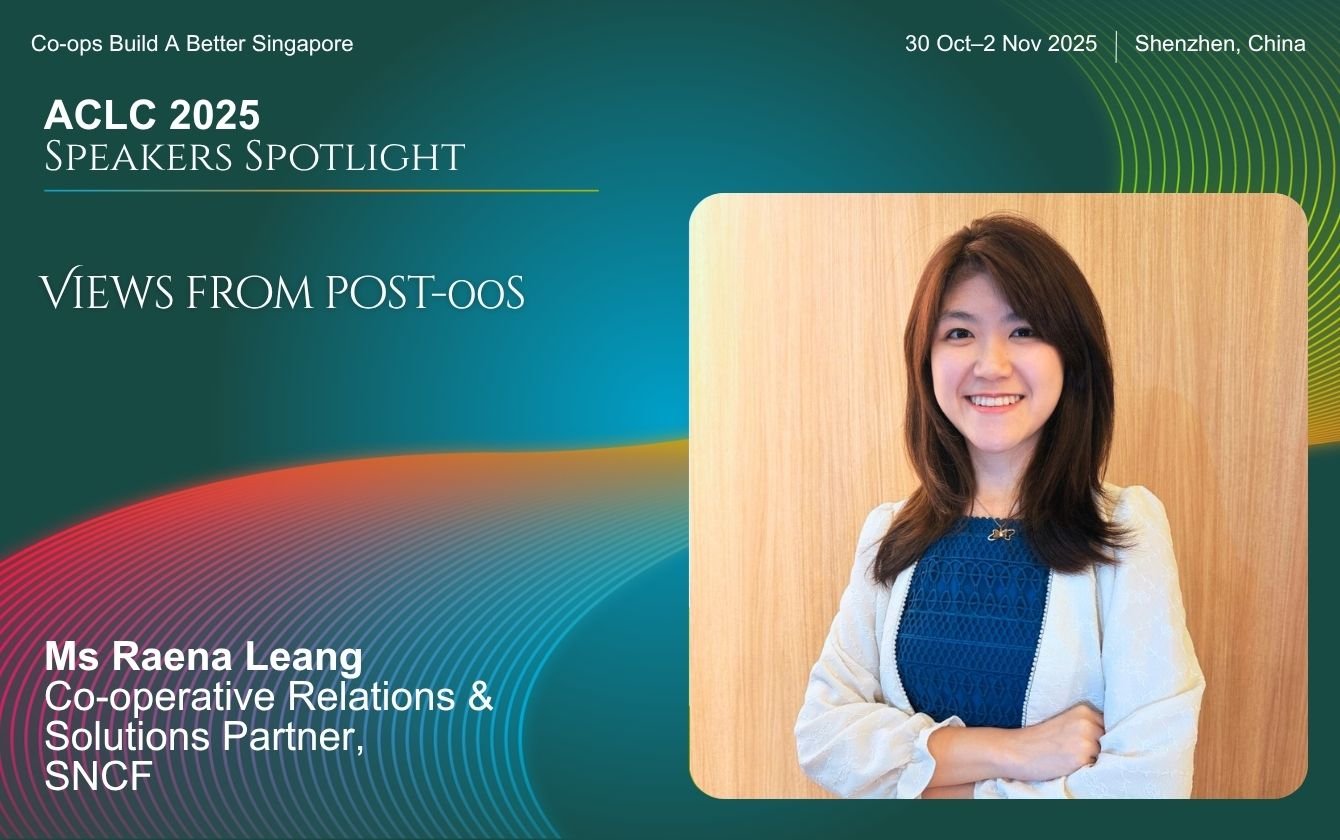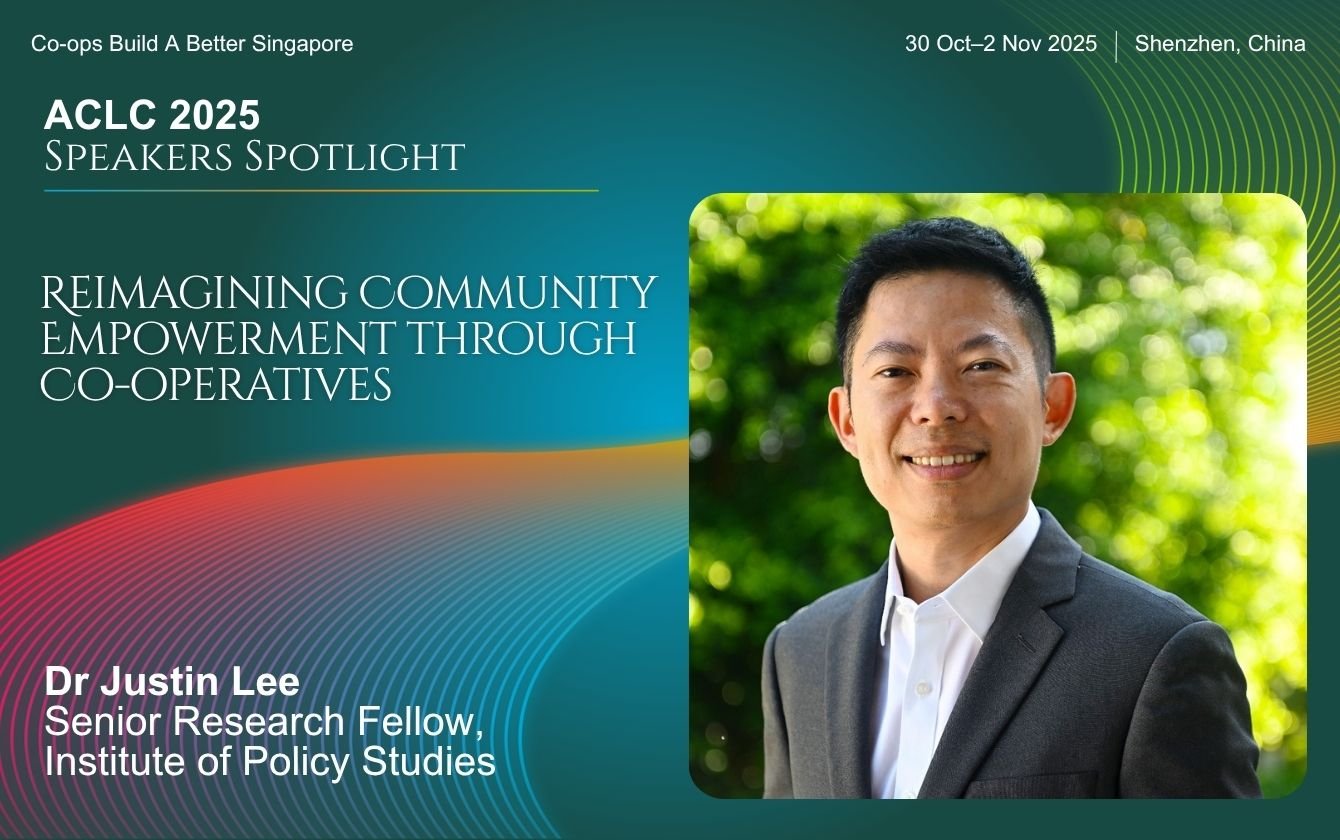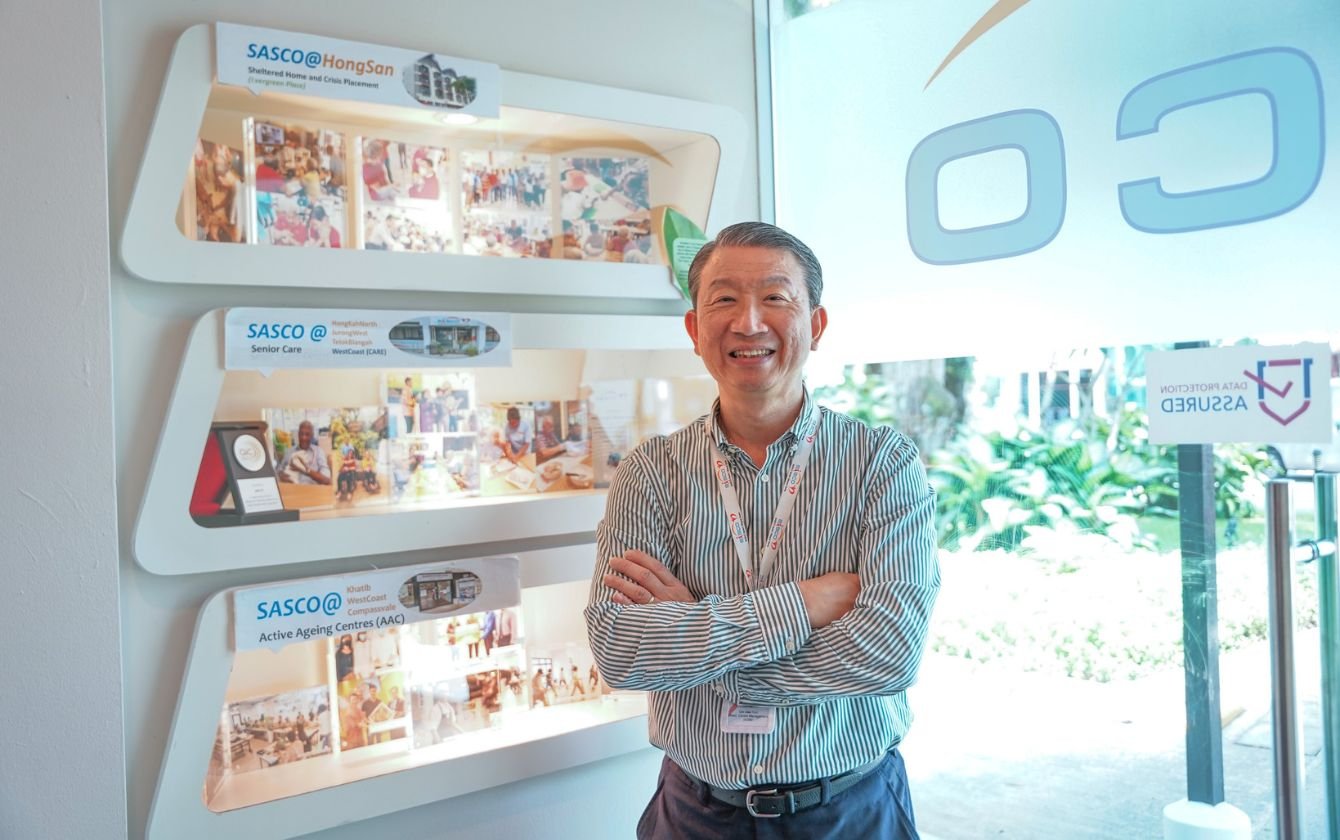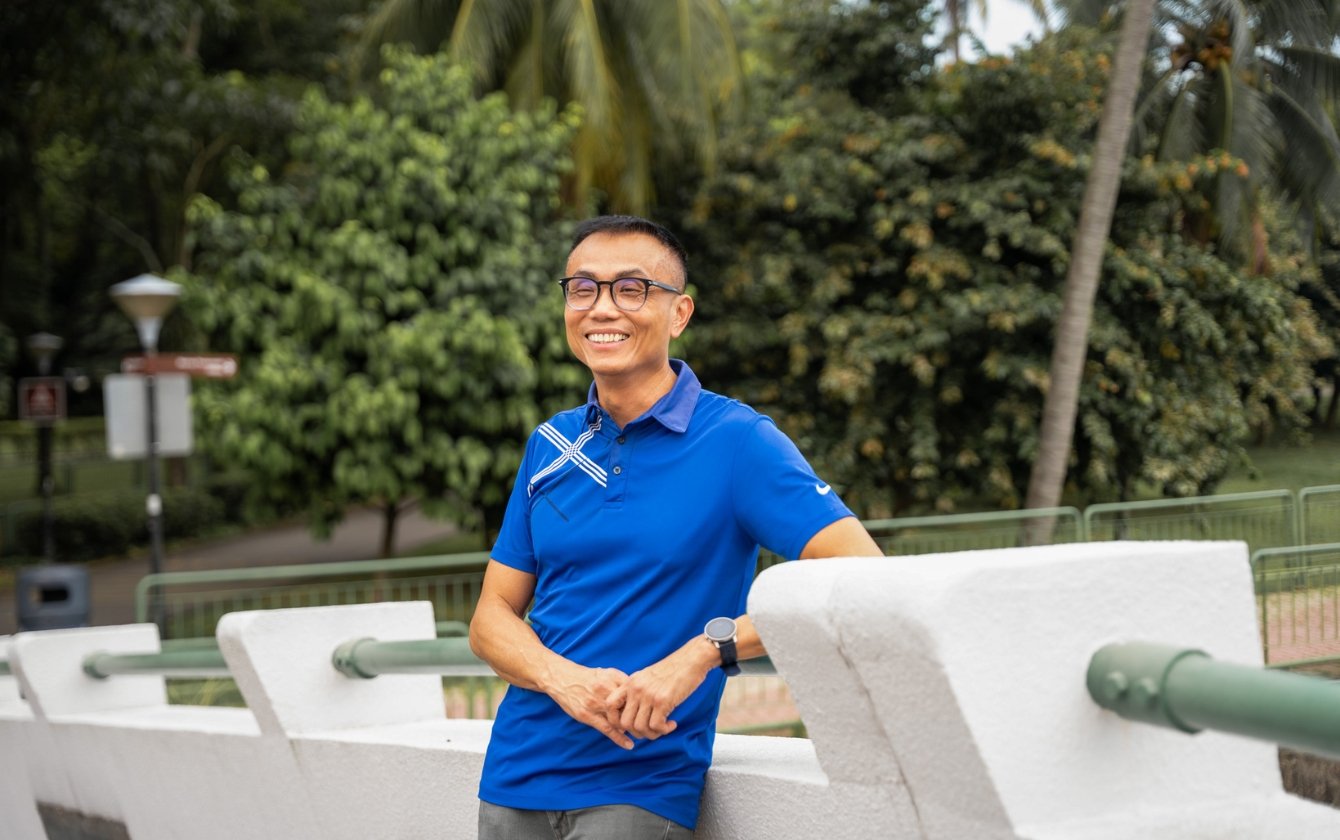

September 2025 Issue: Co-operator Newsletter Quarterly September 2025
ACLC 2025 Speakers Spotlight: Ms Raena Leang from SNCF on youths’ perspectives

The Annual Co-operative Leaders’ Conference (ACLC) 2025 organised by Singapore National Co-operative Federation will be held in Shenzhen, China, from 30 October to 2 November.
This year’s theme “Co-ops Build a Better Singapore” sheds light on how co-ops contribute to social compact and how co-ops can better serve members and the wider community.
In a conversation prior to the conference, Ms Raena Leang shares her insights on the perspectives of today’s youths and how the Singapore Co-operative Movement can evolve to stay relevant.
Read the exclusive below.
Could you share a bit about yourself — your area of work, what drew you to the Movement, what inspires you?
Ms Raena: I currently serve as a Relations & Solutions Partner in the Singapore National Co-operative Federation, where my role involves walking the ground, supporting co-ops through grant disbursements, and crafting programmes and solutions for our co-operatives. I am also partially seconded to GP+ Co-operative where I serve as the Strategic Operations Officer. I work with the GP+ Committee of Management to plan and implement key projects that align with our co-op’s vision to help our members and community, while ensuring financial sustainability.
What first drew me to the Movement was my dual interest in business and social causes. As I explored these fields more deeply, I realised they are not opposites, but they can complement each other. Many social problems are complex and are challenging to be solved by one-off initiatives or charities alone. They require sustainable, long-term approaches.
That is why the community-business model of co-ops resonated with me. When run well, co-ops empower communities to become self-sustaining and self-sufficient, and their impact has the potential to uplift entire communities.It inspires me to contribute to solutions that are sustainable in the long term, self-sufficient, and truly impactful.
From a youth perspective, how do co-ops need to adapt to remain attractive and relevant?
Ms Raena: Co-ops remain highly relevant because the values of self-help and mutual assistance are timeless. Each generation has its own unique needs, and it is important for co-ops to understand youths more deeply so they can offer products and services that genuinely appeal to them.
By offering relevant solutions and engaging youths on the platforms they already use, co-ops can strengthen their appeal, enabling both young people and society at large to better appreciate the model and develop it to its full potential.
What do you hope participants will take away from your session?
Ms Raena: I hope participants will recognise the strong synergies between co-ops and youths’ interests. With many young people drawn to social entrepreneurship and ground-up initiatives, the co-op model, with its unique business structure, can be very attractive to the next generation.
I also hope they will see that the future of co-ops can indeed be powered by youths. But it requires us to adapt, to better understand youths, to design products and services that are relevant to them, to engage them on the channels they use, and to provide the space and resources for experimentation so that new co-ops can emerge.
Finally, I hope participants will appreciate that this challenge is not unique to co-ops. Every organisation must learn to understand the next generation to win their mindshare. The difference is that co-ops have a natural edge: the values of self-help, mutual assistance, community-led action, sustainability, and the not-for-profit purpose already resonate strongly with youths. What we need is to fully develop these strengths and communicate them effectively.
In your view, looking ahead 100 years, how do you see youths shaping not only the future of co-ops, but also Singapore’s wider social compact?
Ms Raena: I see youths approaching societal challenges as opportunities to create ground-up solutions that are sustainable and less dependent on the government or external parties. Instead, they make the most of resources available within the community, with the support of mentors and network, that the Singapore Co-operative Movement can offer. This will help nurture a more resilient and self-reliant society, which in turn will strengthen Singapore’s social and economic fabric for the long term.
By Mary Njo
Interviews have been edited for clarity
*Programme may be subjected to changes.



